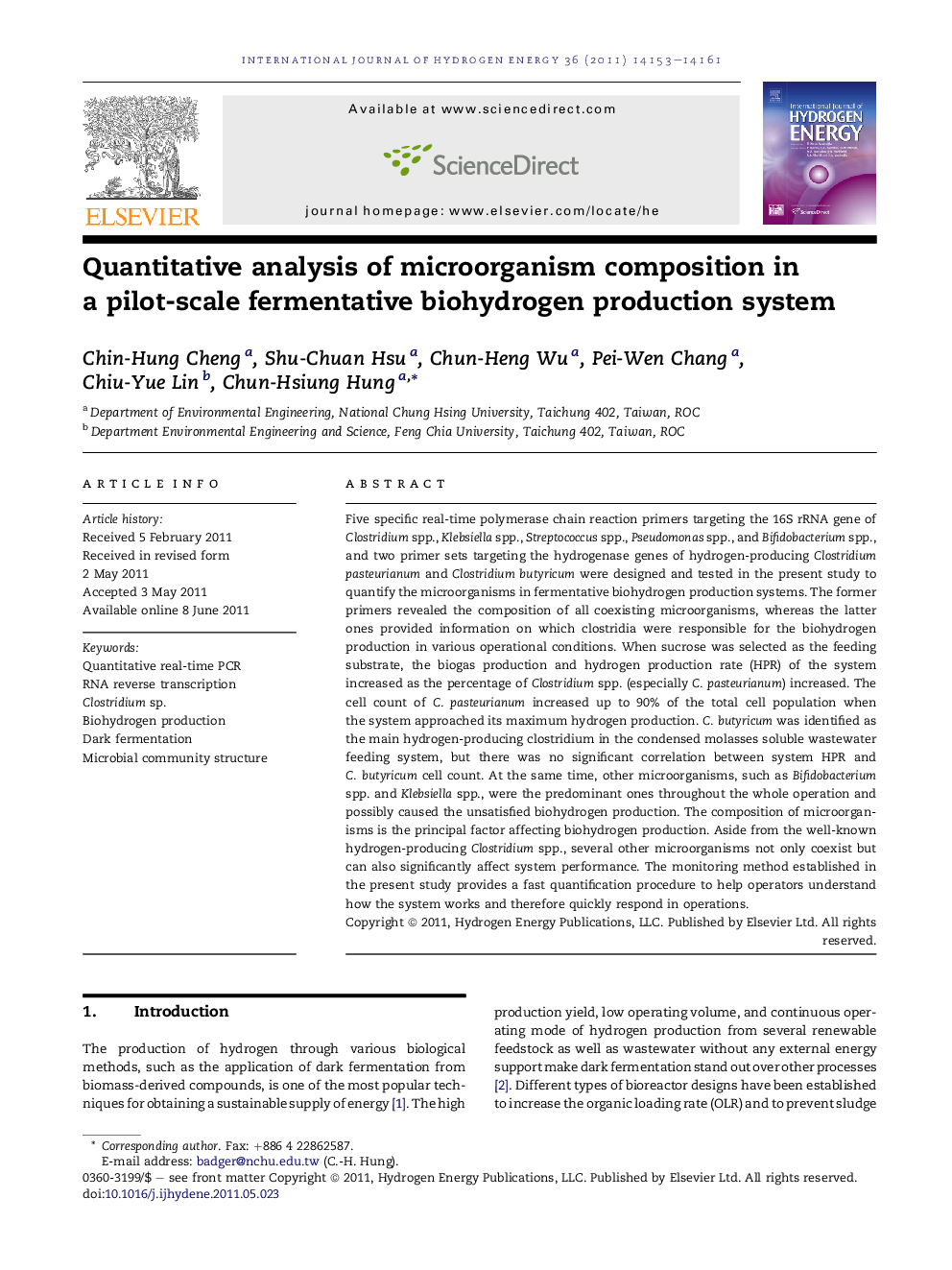| Article ID | Journal | Published Year | Pages | File Type |
|---|---|---|---|---|
| 1278771 | International Journal of Hydrogen Energy | 2011 | 9 Pages |
Five specific real-time polymerase chain reaction primers targeting the 16S rRNA gene of Clostridium spp., Klebsiella spp., Streptococcus spp., Pseudomonas spp., and Bifidobacterium spp., and two primer sets targeting the hydrogenase genes of hydrogen-producing Clostridium pasteurianum and Clostridium butyricum were designed and tested in the present study to quantify the microorganisms in fermentative biohydrogen production systems. The former primers revealed the composition of all coexisting microorganisms, whereas the latter ones provided information on which clostridia were responsible for the biohydrogen production in various operational conditions. When sucrose was selected as the feeding substrate, the biogas production and hydrogen production rate (HPR) of the system increased as the percentage of Clostridium spp. (especially C. pasteurianum) increased. The cell count of C. pasteurianum increased up to 90% of the total cell population when the system approached its maximum hydrogen production. C. butyricum was identified as the main hydrogen-producing clostridium in the condensed molasses soluble wastewater feeding system, but there was no significant correlation between system HPR and C. butyricum cell count. At the same time, other microorganisms, such as Bifidobacterium spp. and Klebsiella spp., were the predominant ones throughout the whole operation and possibly caused the unsatisfied biohydrogen production. The composition of microorganisms is the principal factor affecting biohydrogen production. Aside from the well-known hydrogen-producing Clostridium spp., several other microorganisms not only coexist but can also significantly affect system performance. The monitoring method established in the present study provides a fast quantification procedure to help operators understand how the system works and therefore quickly respond in operations.
► qPCR method targeting bacterial composition and hydrogenase expression was developed. ► Clostridium (especially Clostridium pasteurianum) was the predominant hydrogen producers. ► Existed of Bifidobacterium and Klebsiella caused unsatisfied biohydrogen production. ► Newly designed PCR primers provide a fast quantification tool for system monitoring.
